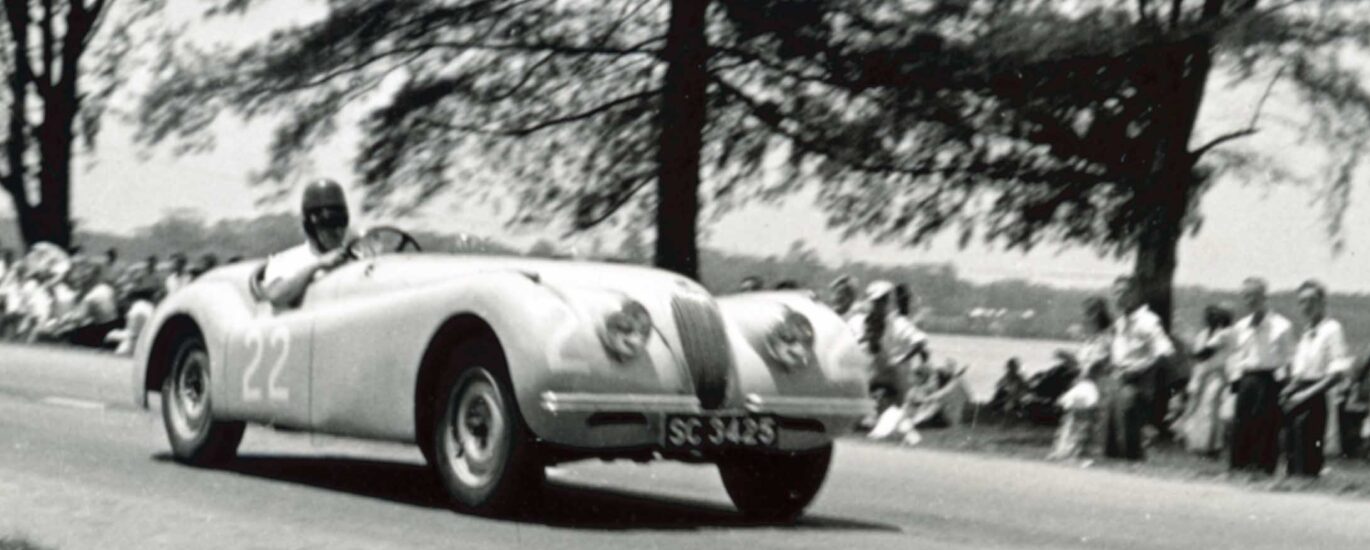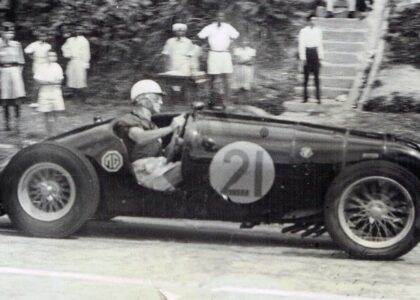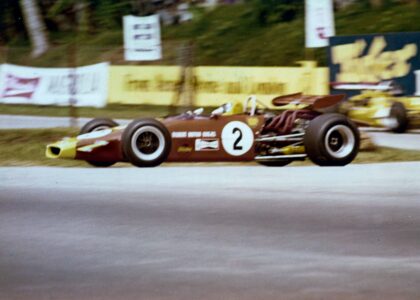The founding father of motor sport in Singapore…or A speed-walla and the dawn of motor racing in South East Asia.
By Eli Solomon
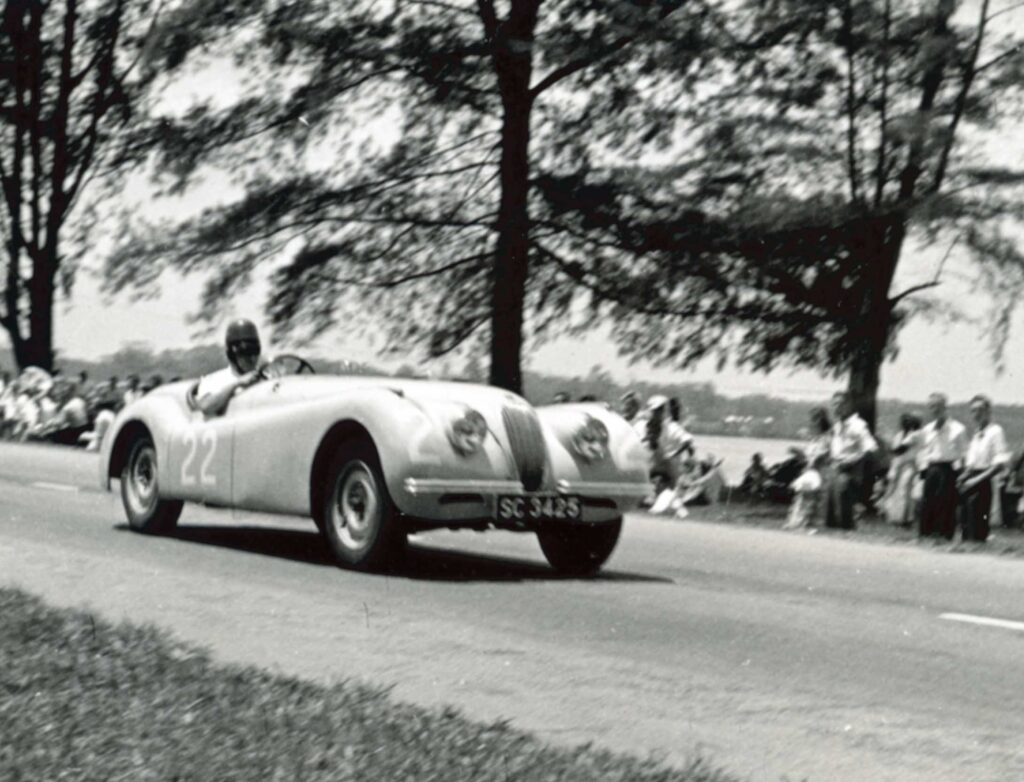
Freddy Pope in his cream Jaguar XK120 (chassis 660021), Singapore registered SC3425, along the main straight during the 1951 Johore Grand Prix. This was the first time he raced the car following its acquisition after the Gap Hill Climb in May 1951. Note the lack of any badges, or his famous Desmo leaping cat.
“We told Freddie so, and were roundly ticked off for our pains,” said fellow motor racing enthusiast Paul Gibbs Pancheri of the perils of one of the hill climb courses that Freddie Pope, the founding President of the Singapore Motor Club, had insisted on using.
“I know motor racing is dangerous, and this is motor racing, so get on with it and don’t argue,” came the retort.
Paul Gibbs Pancheri’s recollection from his autobiography Volunteer! of the first and only Singapore Motor Club hill climb at Pender Road, off Keppel Road-Telok Blangah Road, in Singapore.
Born in West Dulwich, England, C.F. Pope had been involved in land speed record attempts since his youth. There are references of a person named Pope having raced in Brooklands in 1932, the dirt track at Crystal Palace, and one who assisted acclaimed race car builder Bryan Gush in building a midget racer for the 350cc engine records at Brooklands. C.F. Pope was also Major in the British army and participated in the landing when British and Indian Army liberation forces (of the 23rd & 25th divisions of the British-aided Indian Army) reentered Malaysia on 9 September 1945 at Morib Beach (off Port Swettenham). After demobbing, Pope joined Chia Yee Soh’s automobile distributor, Singapore Motors as works manager. It lasted until February 1948 when Pope, then 38, commenced operations of his own workshop on busy Anson Road.
POPE ARRIVES
How many recall the time when Malaya (including southern neighbour Singapore) had a Pope in motor sports? Little credit has been ascribed to this avid motor sport enthusiast and pioneer, who championed club-level motoring events and almost single-handedly established South East Asia as a motor sports venue with an annual Grand Prix across two borders. Almost nothing remains in our collective recollections that such a person even existed.
By all accounts, this gentleman had a mercurial personality, and took the moral high ground when he felt it necessary, or stormed out as club president when things did not meet his approval. He was both revered and feared by the local motor racing community, and more often than not, got his way when it came to requisitioning real estate space for a race meeting from local councils.
Without the legendary C.F. Pope, Freddie to his friends, South East Asian motor sports would never have taken off as rapidly as it had after hostilities in the region ended in 1946.
Back in 1946, Pope, a member of HQ Staff, Movement And Transport, decided he wanted to stay on in Singapore. He already had some exposure to motor sport though few knew this when he founded the Singapore Motor Club and took on the mantle of its first President.
I have never met the man. By the time I was interested in motor racing, the old guard had all but vanished. The sport was, I felt, a colonial subject bordering on taboo. The ones who gave me a bit of background on the man included Dickie Arblaster, Lim Peng Han and Rodney Seow. They certainly knew Pope well and had immense respect for him and his standing in the sport in Asia. I too, have a connection with Pope, albeit a rather tenuous one. Arblaster and Pope had been involved in developing a built-in-Singapore Grand Prix car in 1953, together with Edgar L.G. Bailey, then of Borneo Motors. Crafted around the Frazer Nash Le Mans Replica, it became Bailey’s A40 Special, built around the Austin A40 Somerset. I called it the Kudalari Special, but that’s a story for another day.
CONNECTING THE DOTS
Trawling though legendary motor sport historian William “WB” Boddy’s regular column in Motor Sport Magazine one cold night in Hong Kong nearly 20 years ago unveiled one remarkable nugget of information:
“A 12-hour bump-and-bruise session resulted in some International Class J targets being reached, after clocking 44.48mph for one hour. If the car hit trouble, it was easily turned on its side for repairs. Henceforth this entourage, which included Pope (the famous Noel?), Selby (the Bugatti driver?), the girl Gush and ‘Le Croisette’, raised their own records at frequent intervals.
WB on the Gush Special in Motor Sport July 2001 pg100 [the original reference can be found in W. Boddy’s The Story of Brooklands Volume 3, Grenville Publishing, 1950]
The above records were established at Brooklands in 1933 and the car referenced was Bryan Gush’s 1933/34 Blackburne-engined machine called “Vitesse”. It was unlikely to have been Noel Pope, who worked with Gush.
Next to my copy of this dog-eared magazine was a press clipping from Singapore’s hallowed daily, the Straits Times, dated 22nd August 1948. The article reported how excited some motor racing enthusiasts had become over the possibility of racing in Malaya, even as tensions with communist insurgents intensified. “The situation up-country has postponed furtherance of the Singapore Motor Club’s project to hold a road race on a 1¾ mile-course just outside Johore Bahru. Many enthusiasts have been constructing ‘specials’, or cars of their own design for the hoped-for event, including Mr. Freddie Pope, the President of the Club, who is toiling over the assembly of a 350cc BMW motorcycle-engined single-seater piece of great ‘vitesse’(author’s italics), and Mr Lim Peng Han, who has been working on some Ford V-8 ‘specials’ of a similar sprightly nature….”
Reference to the “great ‘vitesse’” single-seater road car using a 350cc Class J engine caught my eye. This article harked back to the 1930s when the twenty-something year-old Pope was involved with Gush at Brooklands. Putting the two together, I concluded that Pope was no newcomer to motor sports when he arrived in Malaya.
FIRST A CLUB
When the role of the local automobile associations became geared towards representing road transport issues, motor sports enthusiasts quickly grouped together to form their own sports car clubs. In Singapore, a meeting at the Adelphi Hotel on 25th February 1948 was conducted for this precise purpose. Freddie Pope became the Singapore Motor Club’s (SMC) founding member and its first President. The SMC was affiliated with the Automobile Association of Malaya (Singapore Branch) which operated under the rules and regulations of Britain’s RAC, and so the framework and regulations for hosting events was already in place. The Club’s first event, a ‘touring rally’, was held on 21st March 1948. The club had 10 very enthusiastic members. “Freddy [sic] WAS the beginning,” enthused the Singapore Free Press in an article in October 1954 on the formation of the SMC.
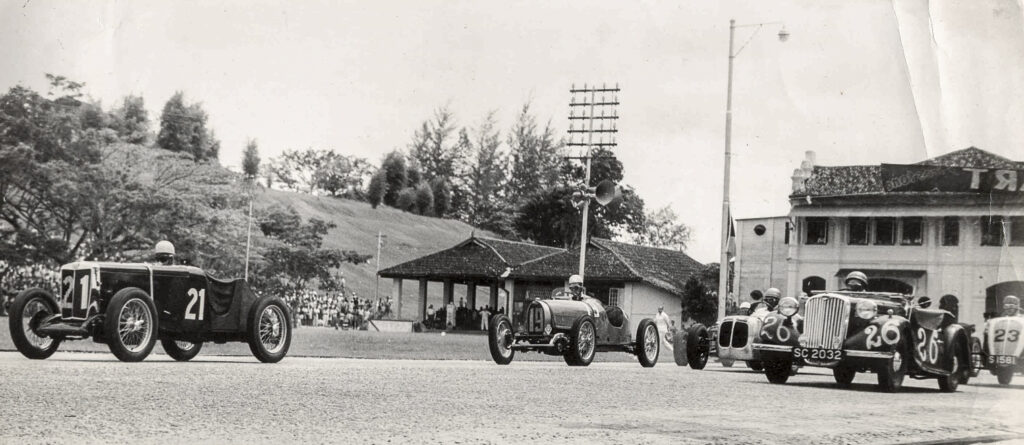
The earliest photo we have of Freddie Pope’s Fiat FP23 Special – with front grille in place. Look closely and see the car at the extreme right of this photo, complete with road registration (S1581) and front grille (later to be raced without one).
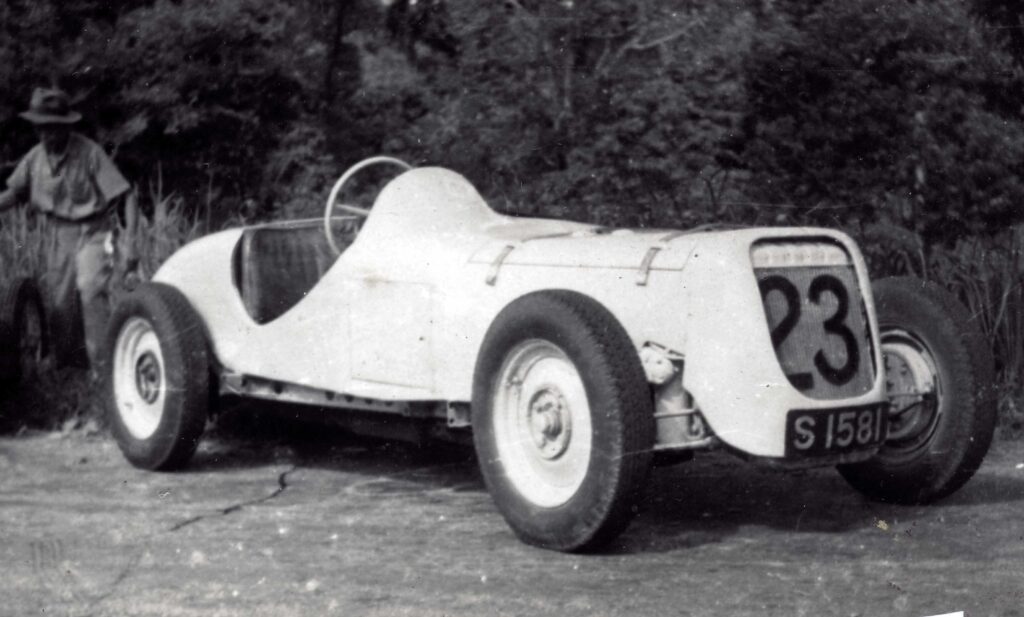
Pope’s ‘Fiat FP23’ before, Jaguars dominated his racing.
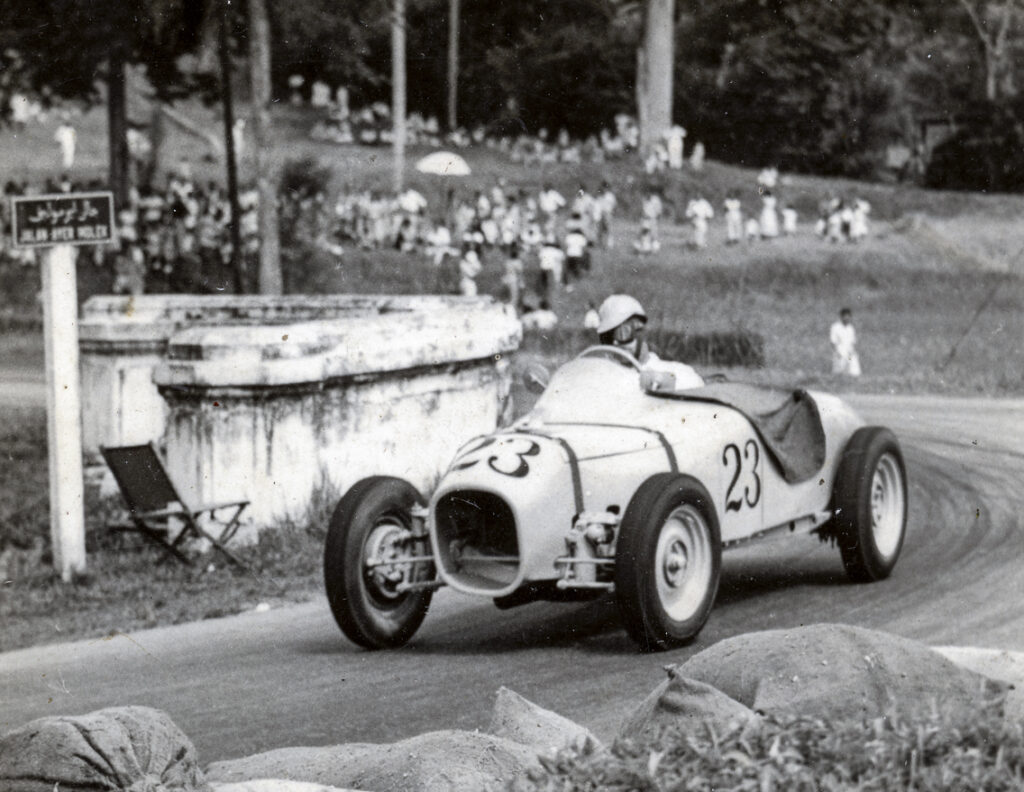
Freddie Pope told anyone who would listen that ‘FP23’, his Fiat ‘Taxicab Special’, was really a taxi during the Japanese occupation of Malaya.
Pope didn’t last as President for long. He relinquished his position after he set up his motor retail and repair business at 69-73 Anson Road, possibly due to a conflict of interest, or perhaps something more acrimonious. He quickly established himself as one of the top tuners of the region and for a number of years, no other competitors came close. The company’s smallest job, so claimed an early C.F. Pope advertisement, was a perambulator – “Nothing too large yet received.” In the meantime, he continued to exert his influence on the activities of the SMC.
THEN THE POLITICS
First order of the day for the SMC was to get the events going, hill climbs being the preferred choice for members hoping to hone their skills and fine tune the performance of their cars. Paul Gibbs Pancheri, that ‘hyper-enthusiastic Bentley Apostle’, was another of those thoroughly enthusiastic motor sports men based in Singapore (till Harper Gilfillan posted him to Malaysia). He recalled an early event, the first post-war hill climb held by the club, and the hullabaloo caused (at the Pender Road Hill Climb).
“Freddie Pope ordered Peter [Liddle] and me to form a competitions committee and to arrange a hill climb at Pender Road, off Keppel Road-Telok Blangah Road, via Morse Road. This area is, or used to be, residential for Harbour Board Staff, and permission had apparently been obtained by Freddie, I suppose, for the event. However, he had clearly failed to explain just what would be involved. Peter and I took one look at the proposed course, the access to and from it, the parking for spectators (nil) and for competitors (very little) and the course itself, with trees growing to the edge of the narrow road, most particularly on corners, and we decided it simply would not do. We told Freddie so, and were roundly ticked off for our pains. “I know motor racing is dangerous, and this is motor racing, so get on with it and don’t argue”. So we did, but it took ages to smooth down relations with the officers of the Harbour Board, who could not get out of, or get into their houses for the whole day. And the casualties…
“One or two overturned, and there were numerous encounters with the trees which grew so abundantly at the very edges of the road, particularly on corners. One very pretty Chinese girl was driving one of [Lim] Peng Han’s Specials and had the misfortune to hit a tree hard, the near side front spring had the top three leaves firmly embedded in the trunk, and it took a long time to get it free. This was not of any concern to the pretty driver, who had hit her face hard on the aero screen. She was bleeding heavily and all she could think of, was her beauty going to be ruined. IT would have been a pity.
“Peter and I prepared a full report on the meeting for the next Committee Meeting, and as soon as Peter got started, Freddie stood up and resigned. That was a pity too, for he was a great enthusiast…”
Pope was nonetheless resolute in his determination to break new ground, one of the ‘sprint-a-month-wallas’ who campaigned ceaselessly for more sporting events.
SPEED WALLA
The ebullient Pope wasn’t just interested in organising events, he was steadfast when it came to competing throughout the region (including Macau!), initially, in his very well-known FP23, his ‘Flying Taxicab’ Special, and later, with anything he could lay his hands on, or remove body panels from (which he successfully did on several occasions with various Jaguar XKs he had).
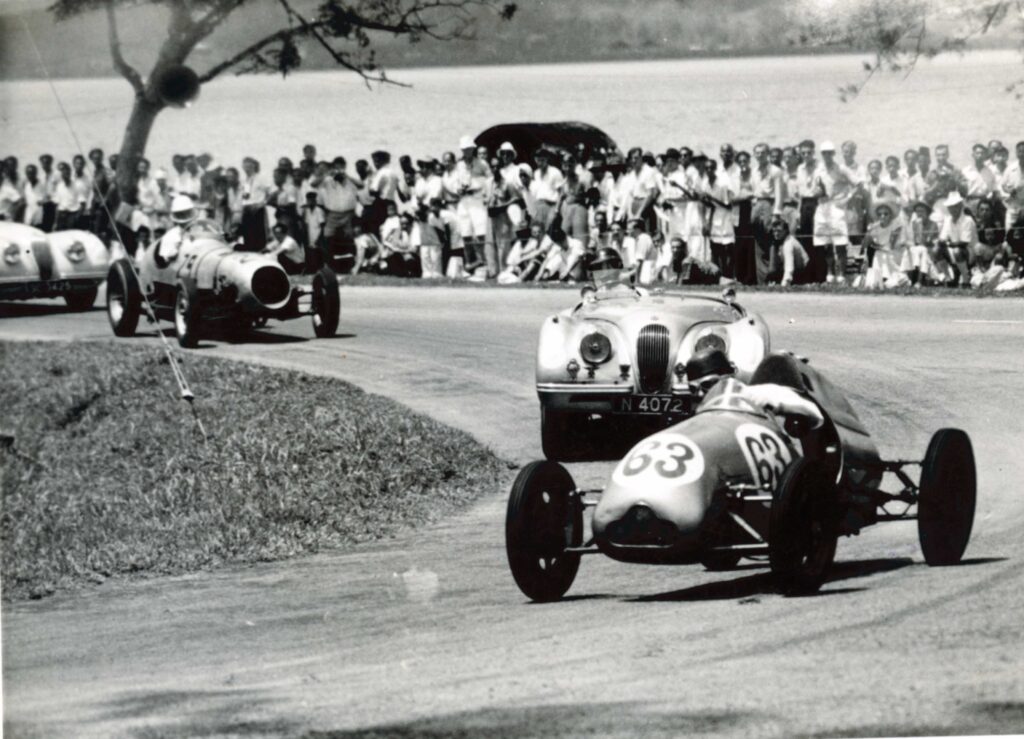
Bill Ferguson leads Freddie Ferguson’s Jaguar XK120 (registration N4072, chassis 660025), Roy Kendall (Kudensay 2) and Freddie Pope (Jaguar XK120) into Zoo Corner during the 1951 Johore Grand Prix. The Cooper JAP won this race.
Pope won the 1953 Johore Grand Prix in his alloy XK120 with spartan monoposto body (acquired from Malayan Airways pilot Brian Hawes, registration SF594). He used the monoposto bodywork only for circuit racing. It was a car he had acquired in 1951 and actively competed in until he sold it in 1955, to be replaced by a Special Equipment XK140, which soon carried the monospoto bodywork for racing as well.
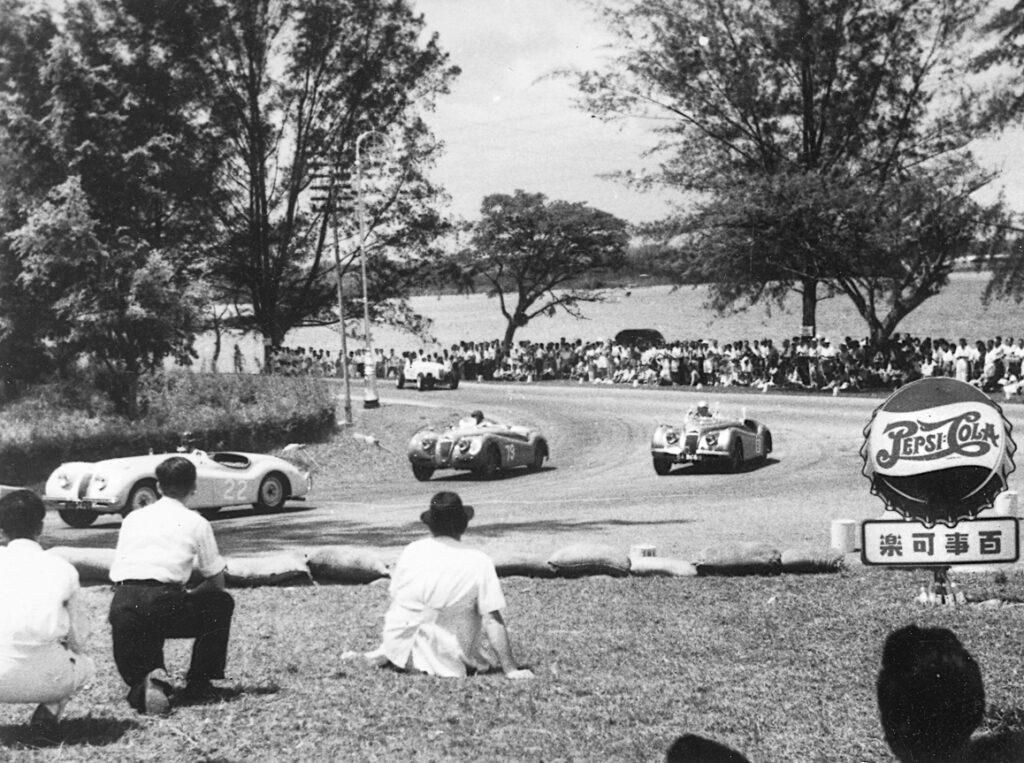
XK Roadsters led by Freddie Pope’s #22 alloy XK120 during one of the support races for the 1951 Johore Grand Prix. The car at the rear is Brian Hawes’ XK120, sans wings.
He didn’t just confine his activities to the circuit. In March 1954, he drove his XK120 (registration SC3425) from Mitchell Pier in Butterworth to the A.A. Box in Collyer Quay, shattering a 19-year record held by Neville “Red” Reddish. Pope ventured even further in February 1959, accompanied by Brian McCaffrey and Neil Moncrieff, on a four-day-plus 3000-mile Singapore-Bangkok-Singapore drive in a Ford Zodiac saloon, a drive that lasted 103 hours!
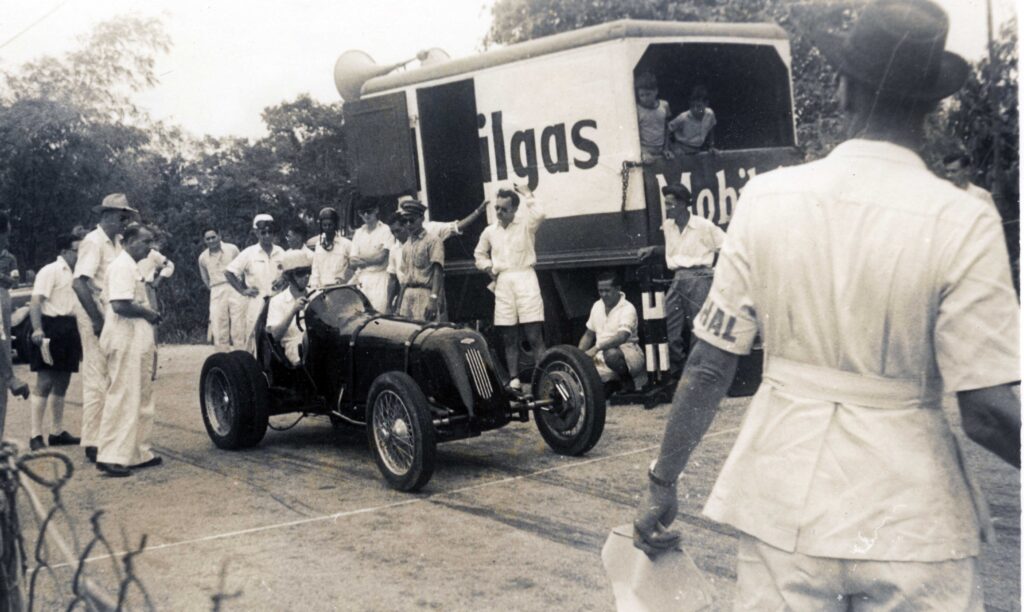
This record-setting ‘Fane’ Frazer Nash was maintained by Freddie Pope for its Hong Kong-based owner. The story of this Frazer Nash can be found at: The Colonel, Fane and A Frazer Nash
Throughout the period, Pope would be a regular entrant in the sprints and hill climbs, often with cars he maintained for his clients. One example was Lt-Colonel Peter Vaughan’s Fane Frazer Nash twin-Centric supercharged monoposto, a car that arrived in Singapore in August 1951 and which competed very successfully until it was shipped back to England.
RETURN TO RACING
Pope’s departure from the SMC committee early on was by no means the end of his influence on the sport in the Peninsula. In fact, it was only a minor setback as he grew his Anson Road tuning business. He was soon back at the helm in 1959 (shortly after the Singapore-Bangkok-Singapore drive), revealing, as incoming Chairman, plans for a clubhouse. His committee consisted of enthusiastic young racers who would play such a big part in regional motor racing years later, people such as Yong Nam Kee, Jan Bussell, Bill Wyllie, Soh Guan Bee and Danny Needham.
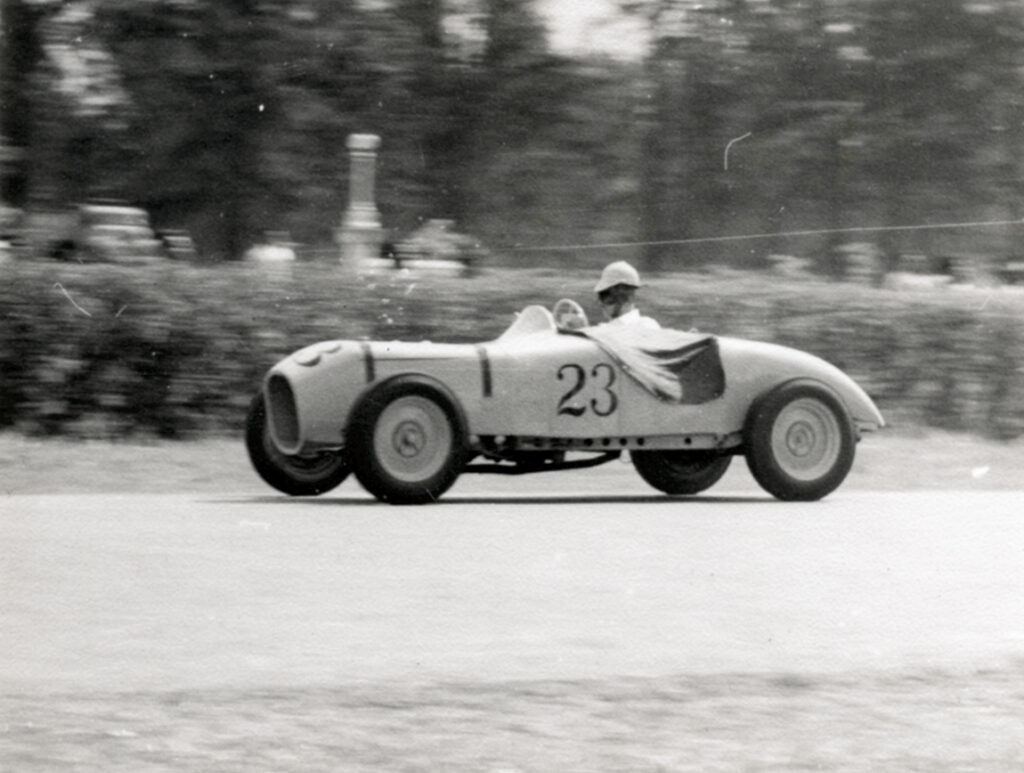
Pope had run out of brakes in his Jaguar XK120 chasing Ferguson’s Cooper JAP the previous year and would be focus instead on his FP23 Special for the 1952 Johore Grand Prix.
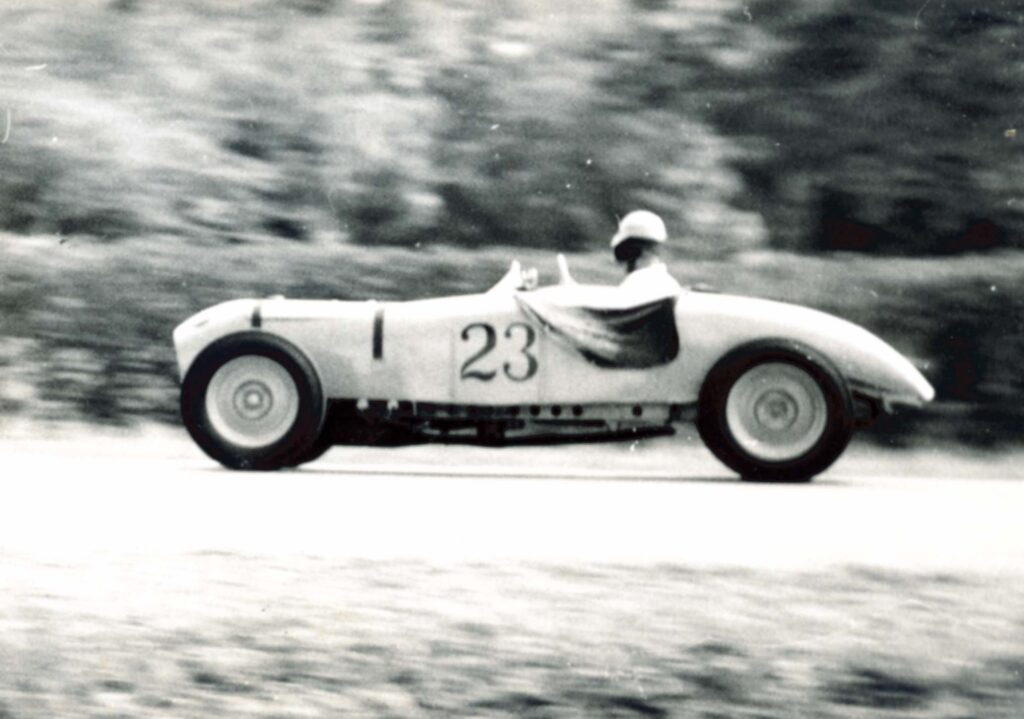
FP23 with Pope at the wheel during the 1953 Johore Grand Prix.
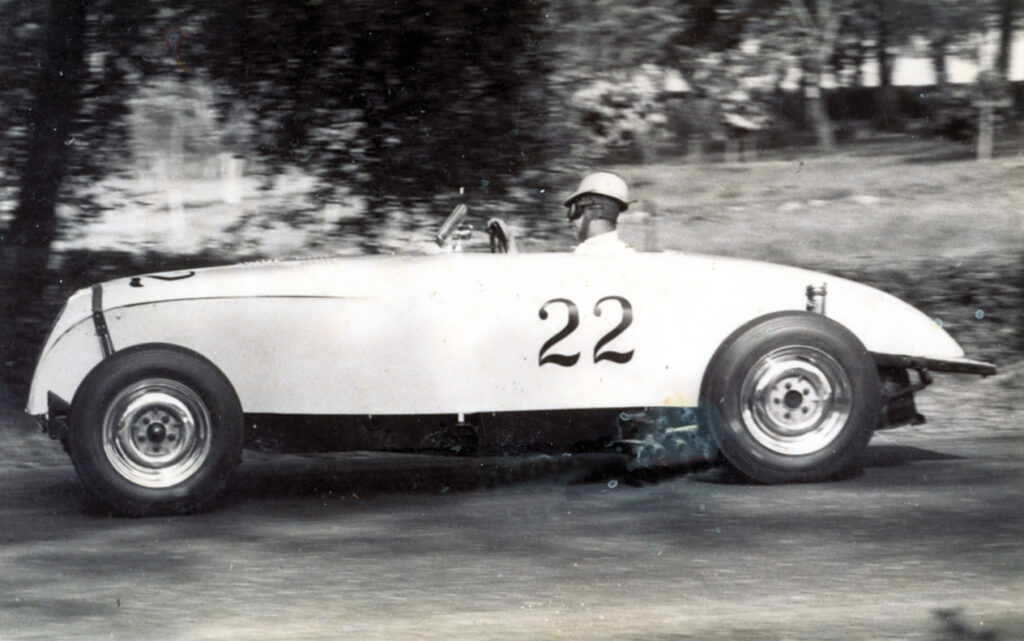
Pope’s lightweight Jaguar XK120 with modified bodywork on its way to victory in the 1953 Johore Grand Prix. Pope won the 40-lap Gand Prix in a time of 1hour 23min 48secs without having to refuel his monoposto XK120. Au Nai Fai was second in another XK120, and Phil Caroline finished third, in an Allard J2X Studebaker, which Pope maintained at his workshop.
It was a timely return to the forefront and Pope exerted all his influence to resurrect the Johore Grand Prix (cancelled by the Sultan after the 1953 event which, incidentally, Pope won), again with the SMC as organiser. His Royal Highness the Sultan of Johore acquiesced and plans were put together for what was to become the Coronation Grand Prix of 1960. Hill climbs, sprints and the Macau Grand Prix now took on a more serious note for local competitors as plans were eagerly drawn up for new race cars to be imported and old race cars to be revived. It was a coup for Pope and his committee, after six barren years without a Grand Prix (the Changi Circuit Race of 1957 turned out to be a one-off Forces Motoring Club do).
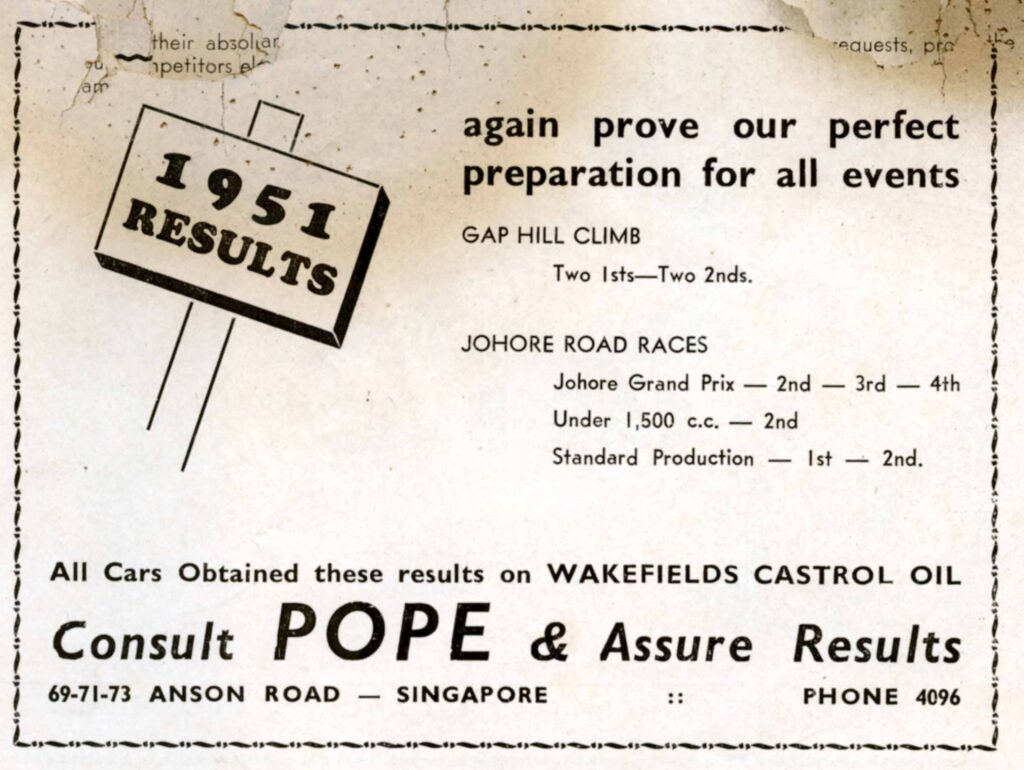
A sample of C.F. Pope advertisements that appeared in the Johore Grand Prix programs and in Singapore Motor Club gazettes during the early 1950s.
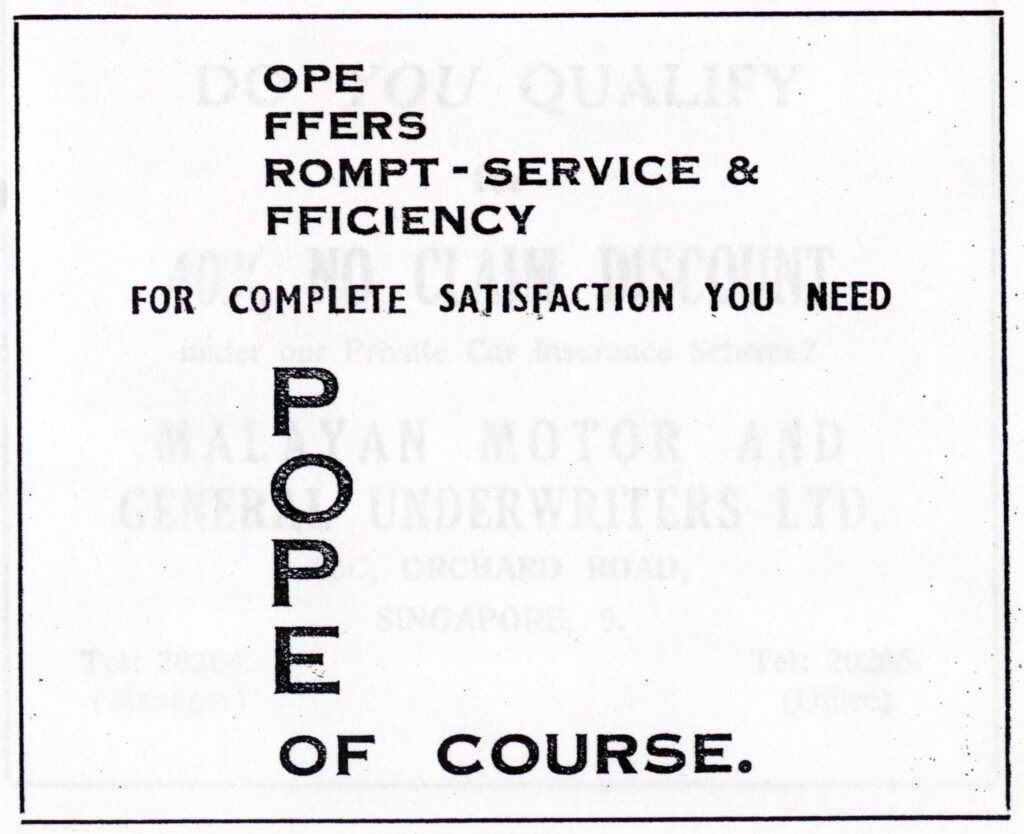
A sample of C.F. Pope advertisements that appeared in the Johore Grand Prix programs and in Singapore Motor Club gazettes during the early 1950s.
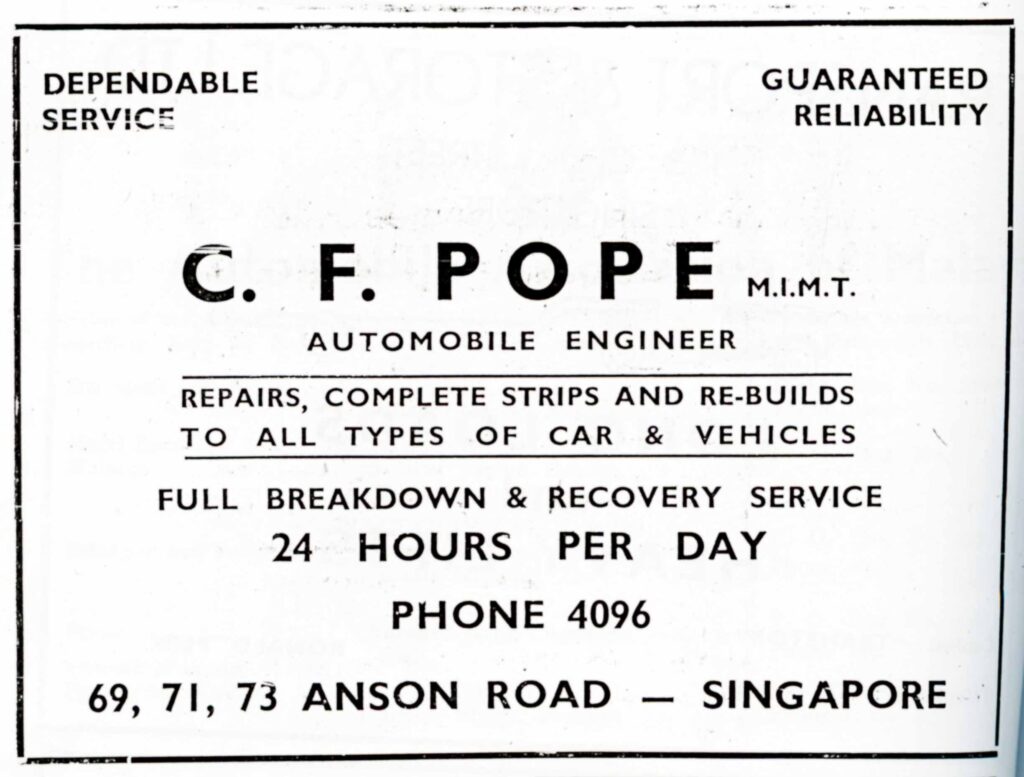
A sample of C.F. Pope advertisements that appeared in the Johore Grand Prix programs and in Singapore Motor Club gazettes during the early 1950s.
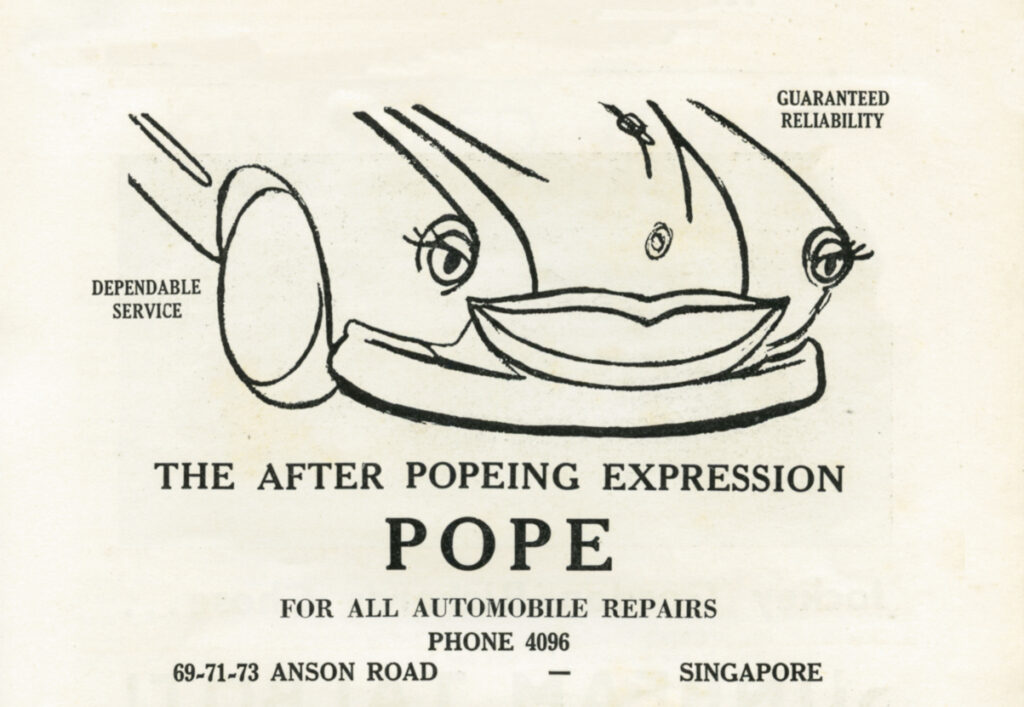
A sample of C.F. Pope advertisements that appeared in the Johore Grand Prix programs and in Singapore Motor Club gazettes during the early 1950s.
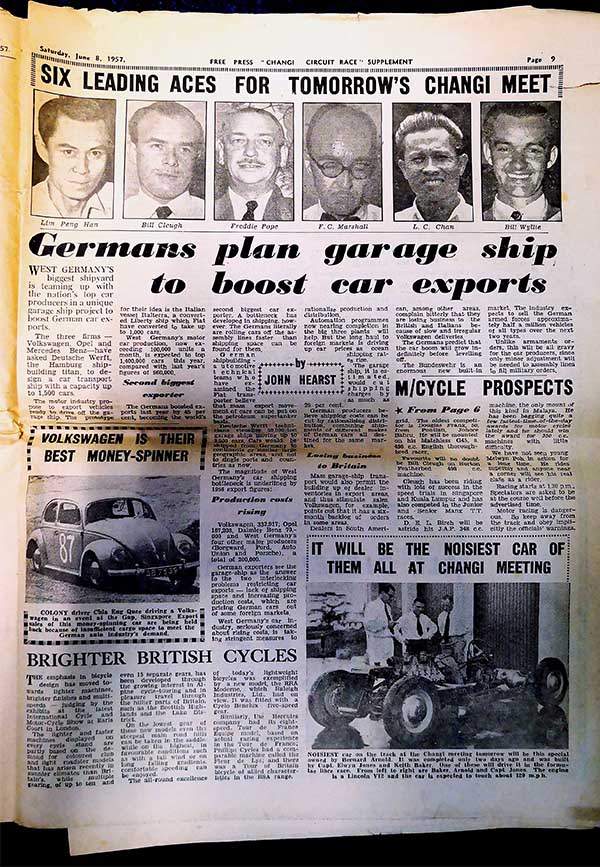
A page off the Singapore Free Press’ racing supplement in 1957. Story of the 1957 Changi Circuit Race can be found here: LANDING AT CHANGI in 1957
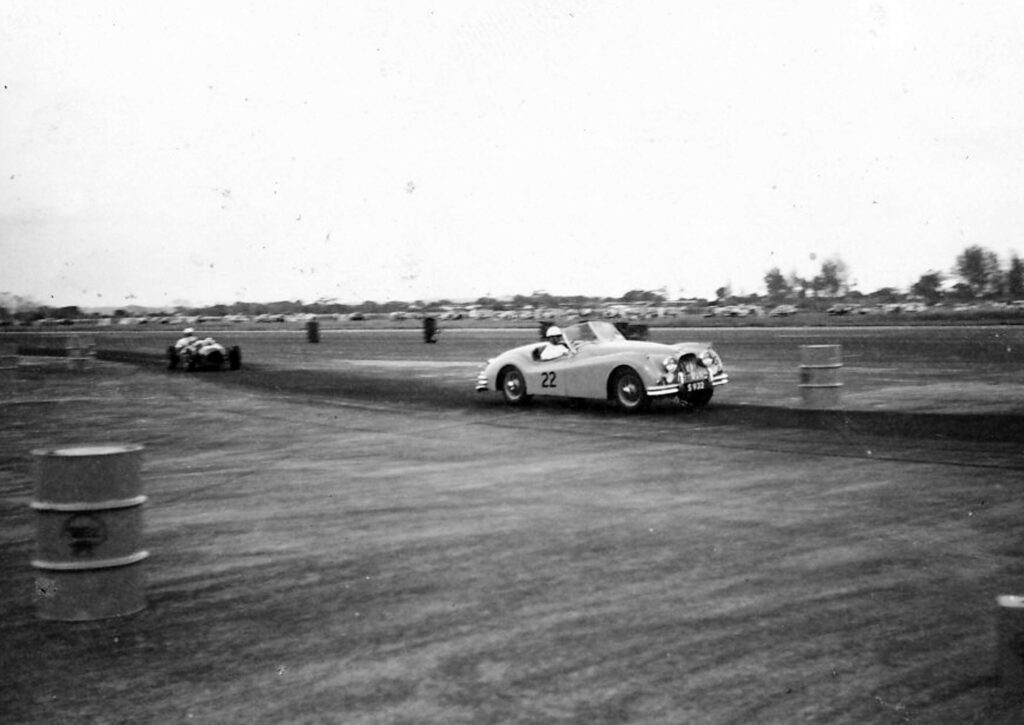
Racing the XK140 at the 1957 Changi Circuit Race.
The Changi Circuit Race of 1957 was itself yet another masterstroke. Recalled Dickie Arblaster, also another tireless SMC stalwart: “Having worked non-stop from November ’52 for four years and five months, Borneo Motors insisted I take long leave from April ’57 onwards. So off I went on an Air-India Super Constellation. When I left, there was no talk or thought of a circuit race, though Freddie was always on the look-out for suitable opportunities, and, clearly, this chance came up at short notice.” Pope’s emphasis was always on the sporting side of events. In 1959, the year he returned as Chairman of the SMC, of the 16 events listed in the SMC calendar, five were sprints and hill climbs!
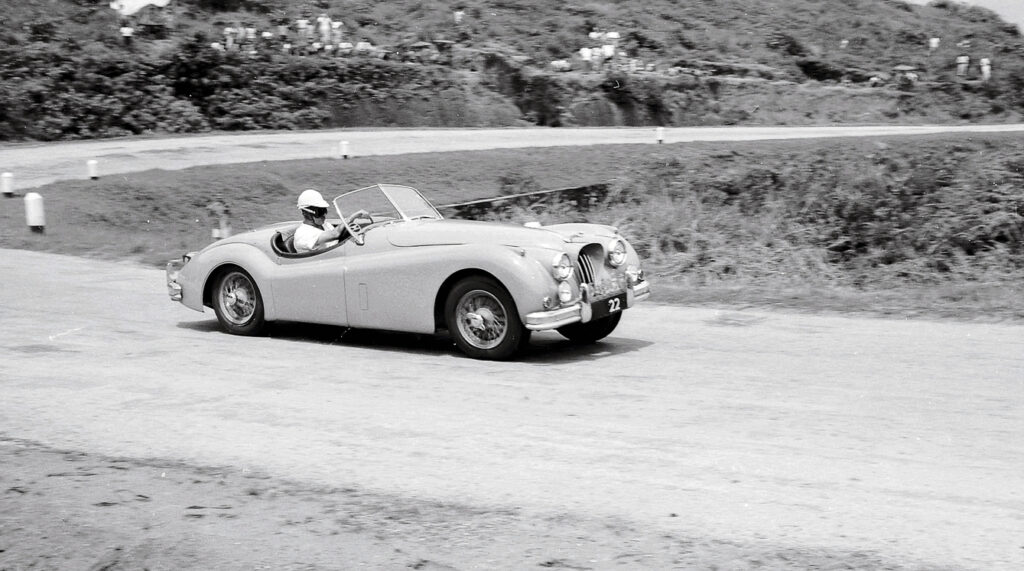
Pope’s Jaguar XK140C (chassis 800011) at the Gap Hill Climb. The car carried road registration S922 and was used by Pope between 1955 until his last recorded event in it at the 10 February 1963 Old Upper Thomson Road Sprint. Note the Desmo leaping car on the bonnet, and the modified cowling to increase air flow into the engine.
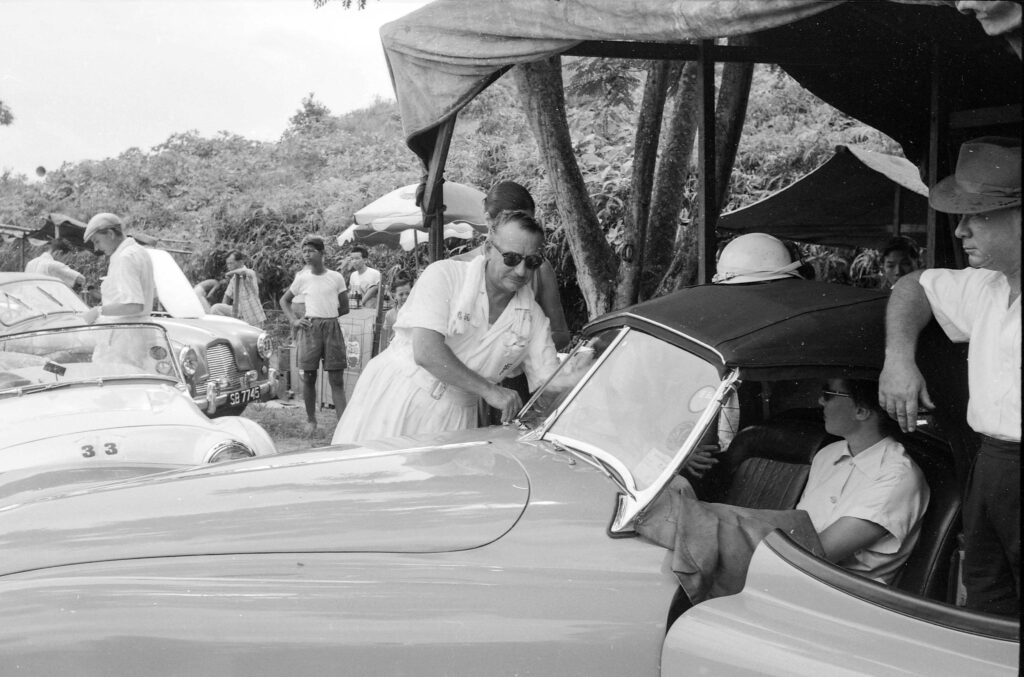
Freddie Pope (left) with his XK140 at the 1956 Gap Hill Climb.
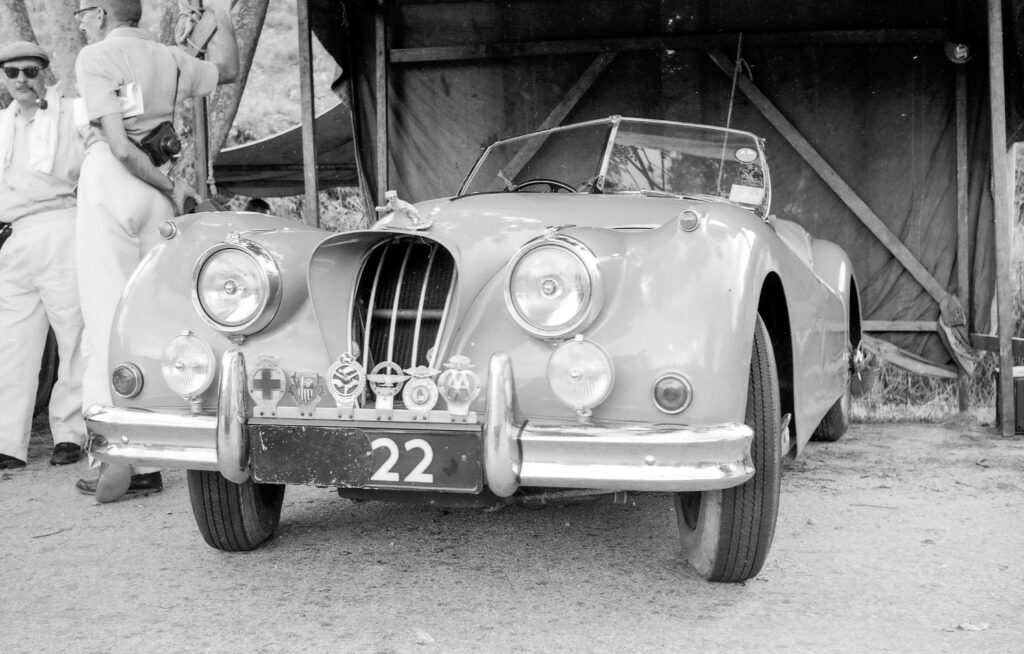
The unique Desmo mascot and array of regional badges on Freddie Pope’s Jaguar XK140 Special Equipment Roadster
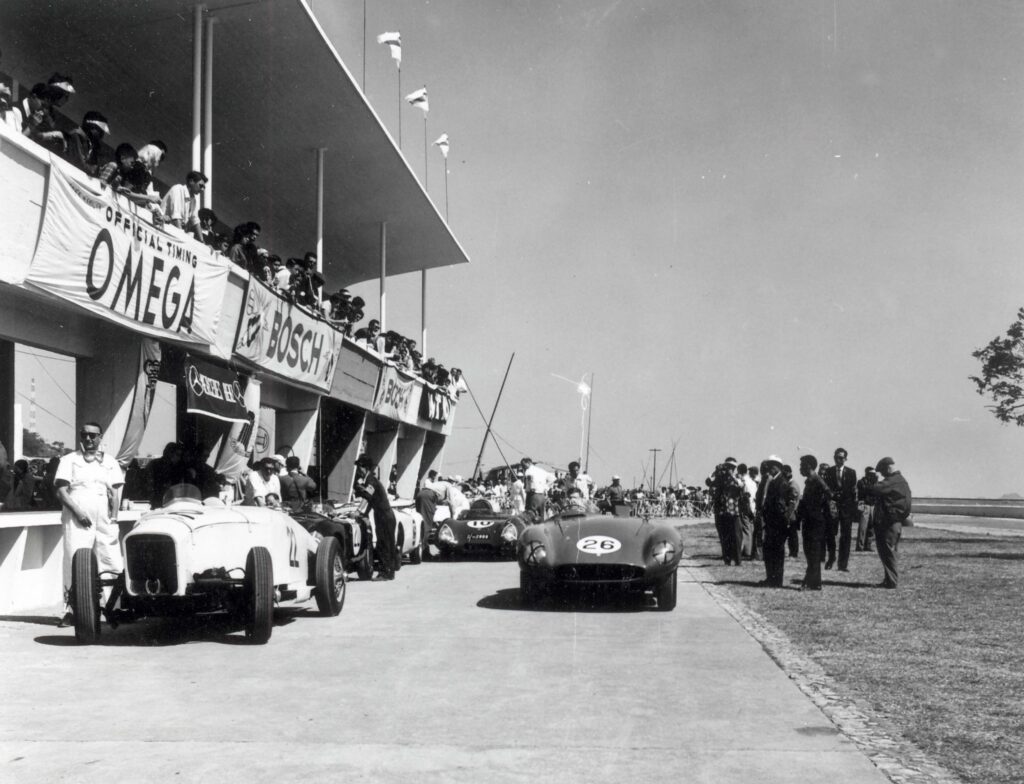
Freddie Pope by his Special Equipment XK140 #22 monoposto
in Macau. Jan Bussell’s Ferrari (#26) is parked alongside
To top off 1959, the visiting contingent from Singapore finished 2nd, 3rd, 4th, and 5th at the Macau Grand Prix (Pope finished 5th in his XK140 Special), a brilliant effort and fitting end to the year, and an excellent way usher in the Golden Age of motor racing in South East Asia.
BEYOND JUST A GP
Following the Johore Coronation Grand Prix in 1960, Pope continued to lobby aggressively for a Grand Prix on home soil, and in 1961, that came to fruition as the Orient Year Grand Prix. Initial suggestions included a circuit around Thomson Road-Whitley Road-Dunearn Road-Adam Road and The Gap (South Buona Vista Road), but the New Upper Thomson-Old Upper Thomson Road circuit was chosen. Pope chaired the Grand Prix Working Committee, was Secretary of the Meeting, and Start & Finish Marshal. Participation in the race was quite out of the question for the 51-year-old stalwart. Perhaps it was as a result of the debacle of the previous year when, as a member of the organising committee, he voluntarily withdrew from the Johore Grand Prix (in his Jaguar XK140) and two supporting events (in his FP23 and Rolls-Royce Phantom III). It did not however stop him from competing in Macau in his Jaguar XK Special.
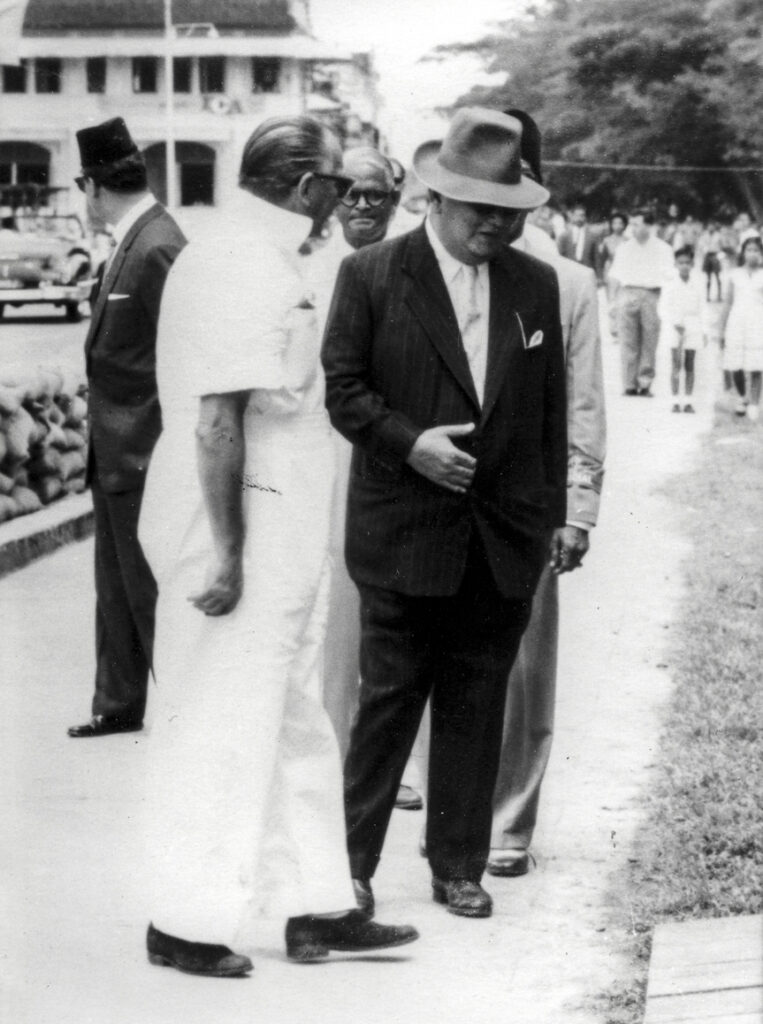
Freddie Pope (in white), President of the Singapore Motor Club, with Johore royalty at the 1960 Johore Coronation Grand Prix. The SMC had been the organiser for the Johore Grand Prix from its inception.
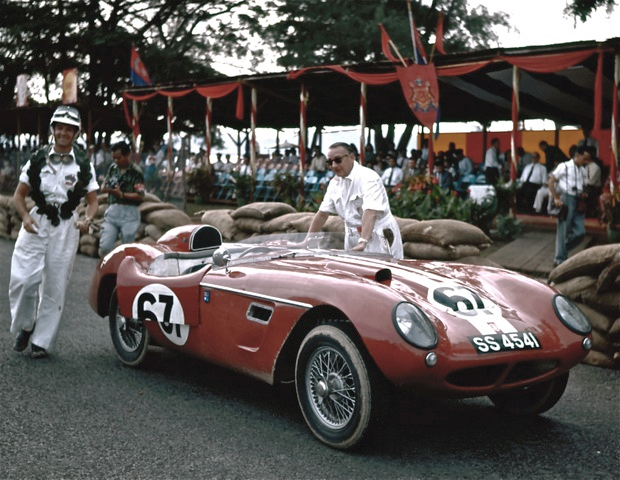
Freddie Pope looks bemused by Bill Wyllie’s triumphant trot by his Wyllie Mistral Special in one of the Johore Grand Prix support races.
No longer was it simply a case of lobbying for a race circuit. The role of the SMC had broadened to one which now had to chart a course for the future of the sport in Singapore. Pope chose the moral high ground, so symptomatic of that period in history, when he said that International status for the Singapore Grand Prix was desirable, but that he (as President of the SMC) was not interested solely in a commercial Grand Prix. “We are interested in training through non-commercialised events, riders and drivers who would not only become worthy of partaking in Malayan events but could participate in international events in many parts of the world”. Pope had a very good point. Without the grassroots enthusiast, the Grand Prix would be the domain of the foreign competitor.
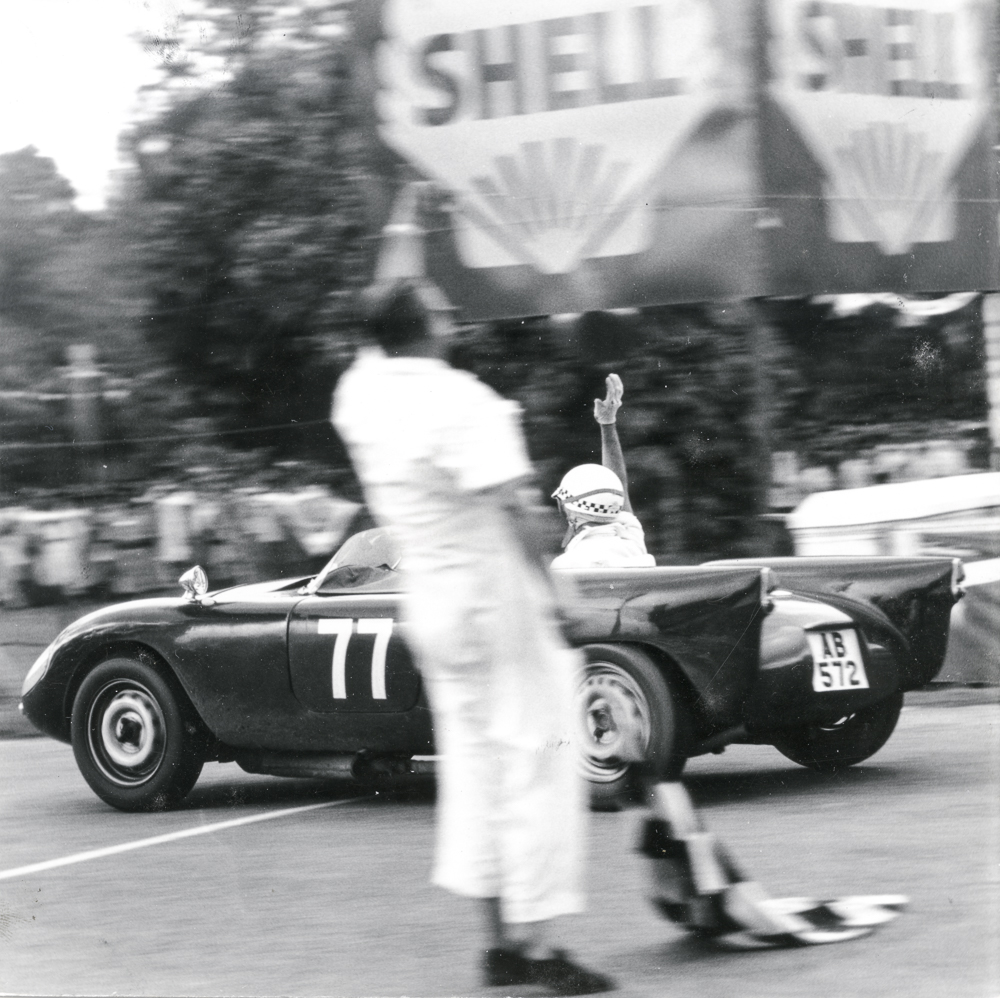
Flag Marshal Pope – as Bill Wyllie wins the 1960 Johore Grand Prix in his Auto Union.
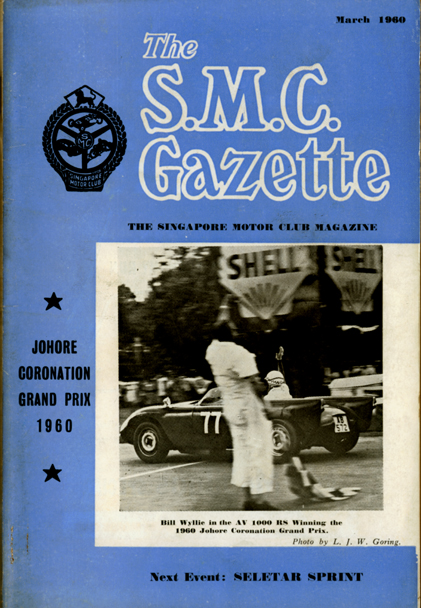
Pope made the cover of the Singapore Motor Club’s Gazette in March 1960.
Pope’s views were admirable and reflected the views of many of the mature club members. Said Pope after the inaugural Singapore Grand Prix in 1961: “To import into Malaya commercially professional drivers would cost many thousands of pounds and if such a thing were done, our non-professional local riders and drivers would be completely outclassed.” The annual street Grand Prix did little to encourage local competition and from 1966, Pope’s fears became a reality in Singapore when international entrants were lured to race on the island, with fully-covered packages.
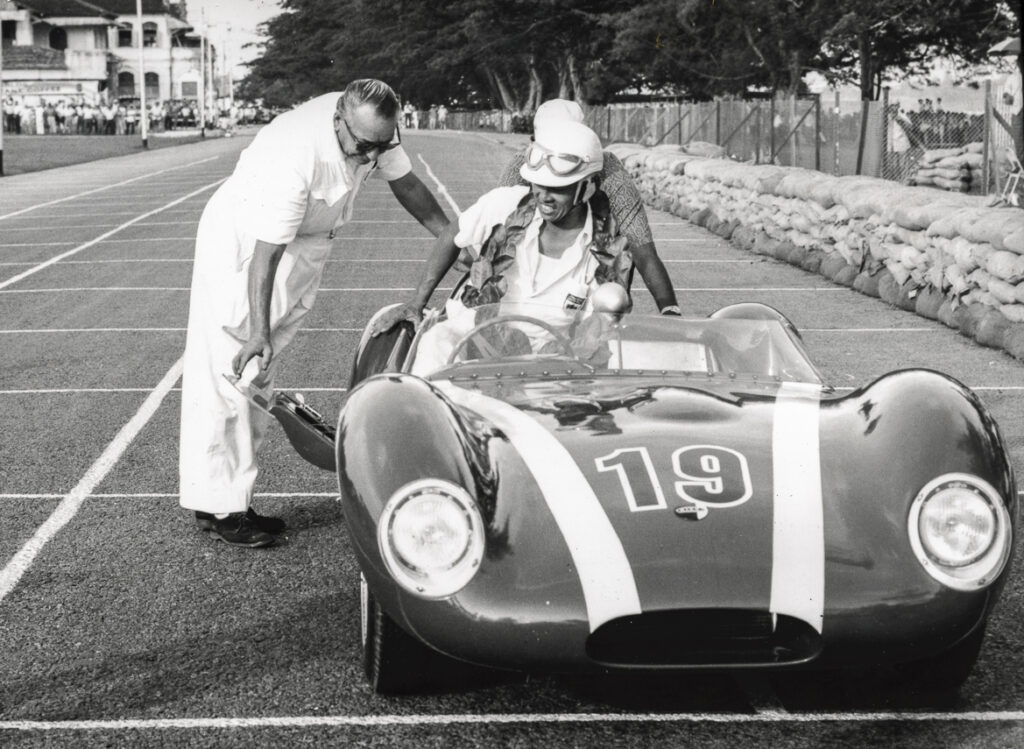
When he wasn’t racing, he was still right in the middle of the action. Here he’s ushering victorious Chan Lye Choon, following his 1961 Johore Grand Prix success in the Lola Mk1 FWE Climax.
The larger-than-life Pope continued to play an important part in the motor club in the early 1960s, even as he faced difficult years for his Anson Road business. The locally-built specials were a dying breed and the larger local motor agencies were getting their act together with proper service workshops and agencies. An eight-day strike by his staff in August 1960 was a major setback, the Singapore Motor Workshop Employees’ Union increasingly exercising its influence over wages and working conditions.
The last time Pope appeared as an official in the Singapore Grand Prix was in 1963. That same year, he was bestowed The Public Service Star (Bintang Bakti Masyarakat) as part of the National Day honours by the Yang di-Pertuan Negara, recognition for the marine and automotive engineer who had spearheaded and done so much for motor sport in South East Asia. There has been little admission or appreciation of Pope’s contribution to motor sport in Singapore, partly because archival material is so scarce, partly, perhaps, because Pope was an expatriate who made Singapore his home for many years, and partly, because he was indeed a larger-than-life character that was much admired but held in awe (or hated, depends on who you are asking). Without Pope, there may never have been a Grand Prix in Singapore.
Words by Eli Solomon

